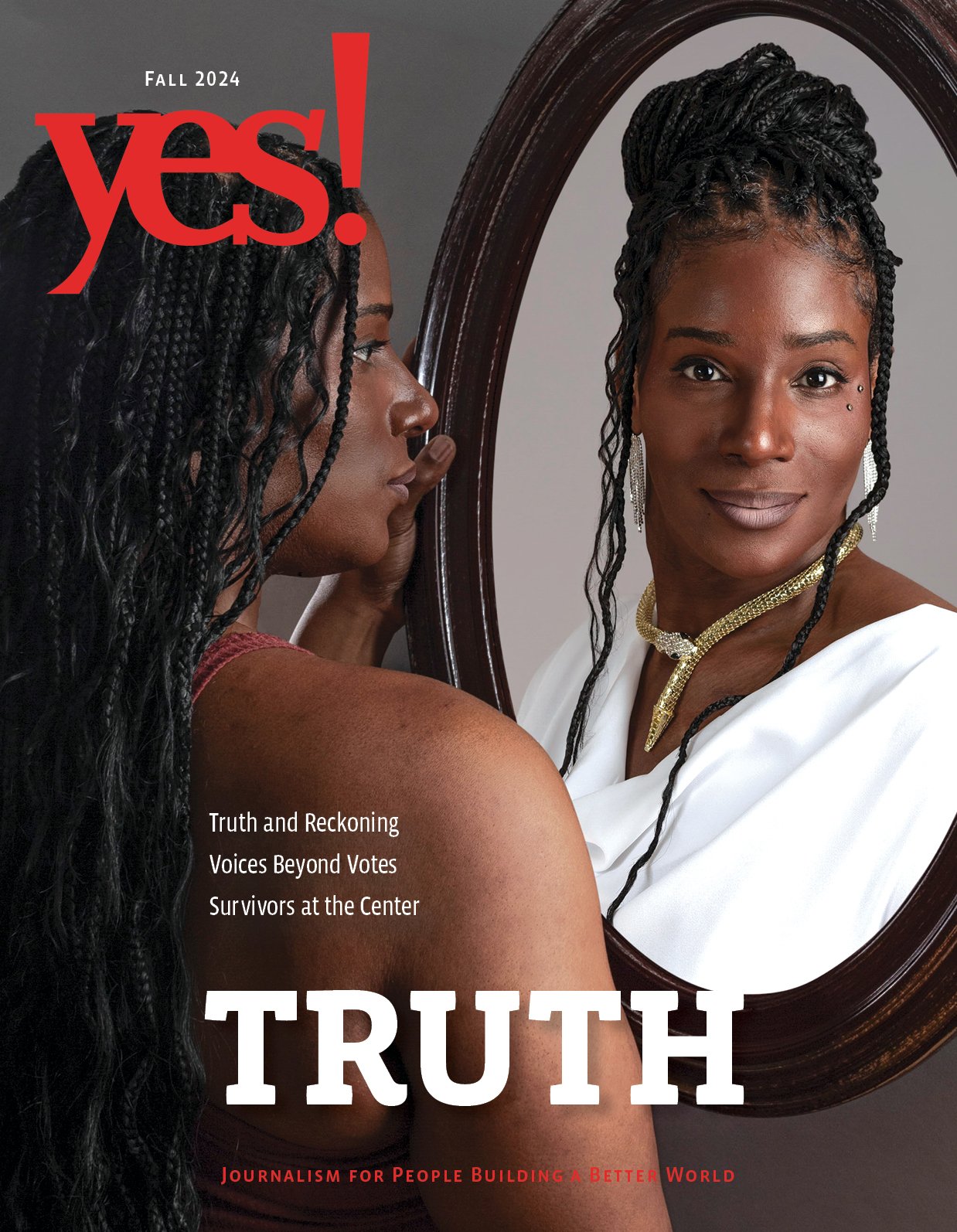Growing Food Justice in Brooklyn

Located in eastern Brooklyn, a culturally diverse and underserved community, East New York Farms! (ENYF!) operates two farms and two community gardens that work to provide solutions to pressing food-justice issues by promoting local, sustainable agriculture and community-led economic development. This pioneering project, founded in the late 1990s, sits under the umbrella of United Community Centers (UCC), a social justice-driven community center that has been serving the East New York neighborhood for more than six decades.
“ENYF! is the only urban agriculture, food justice-led project in East New York,” explains project director Iyeshima Harris. “We have started multiple community gardens in the area and help community gardeners with the process of starting their own gardens.” The initiative offers extensive support to new gardeners, providing them with seeds and the option to sell the produce they grow at the ENYF! farmers market. It also offers training opportunities for gardeners in the form of weekly workshops that teach different gardening skills and techniques.
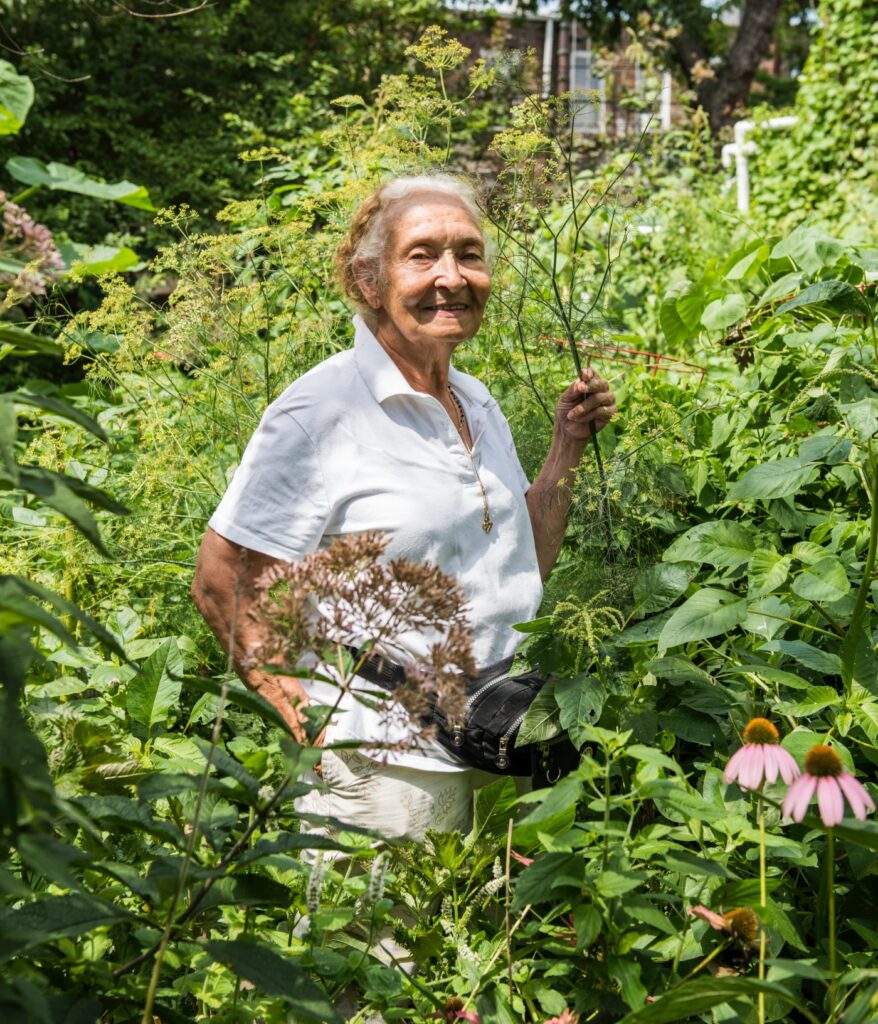
Advocating for healthy eating is an important part of ENYF!’s mission and the main focus of their community education program. “We hire community members, and we train them—people who love food and want to learn how to cook,” says Harris. “They then go out into the community and perform live demonstrations, and make recipes from the produce on the farm, or recipes from the farm’s cookbook. They basically educate the community on healthy eating or different produce that could be used to help combat a disease they might have.” The service is particularly crucial in their neighborhood, which is a victim of the contemporary destructive pattern seen in many low-income urban areas: the harmful combination of lack of access to affordable, fresh produce and the abundance of nutritionally poor fast-food options, both major contributors to high rates of food-related health problems such as obesity or type 2 diabetes. According to data from the city’s Department of Health and Mental Hygiene, East New York suffers one of the highest incidences of type 2 diabetes in the city, with almost 15% of the population affected.
The two farms operated by ENYF! are both about 2,000 square meters (22,000 square feet) in size. UCC Youth Farm was founded first, in 2000, and is powered mostly by teenagers enrolled in the internship program. Each year, 35 paid interns aged between 14 and 18 who are living or going to school in East New York work on the farms and community gardens with assigned supervisors. Interns have the option to stay in the program until they go to college.
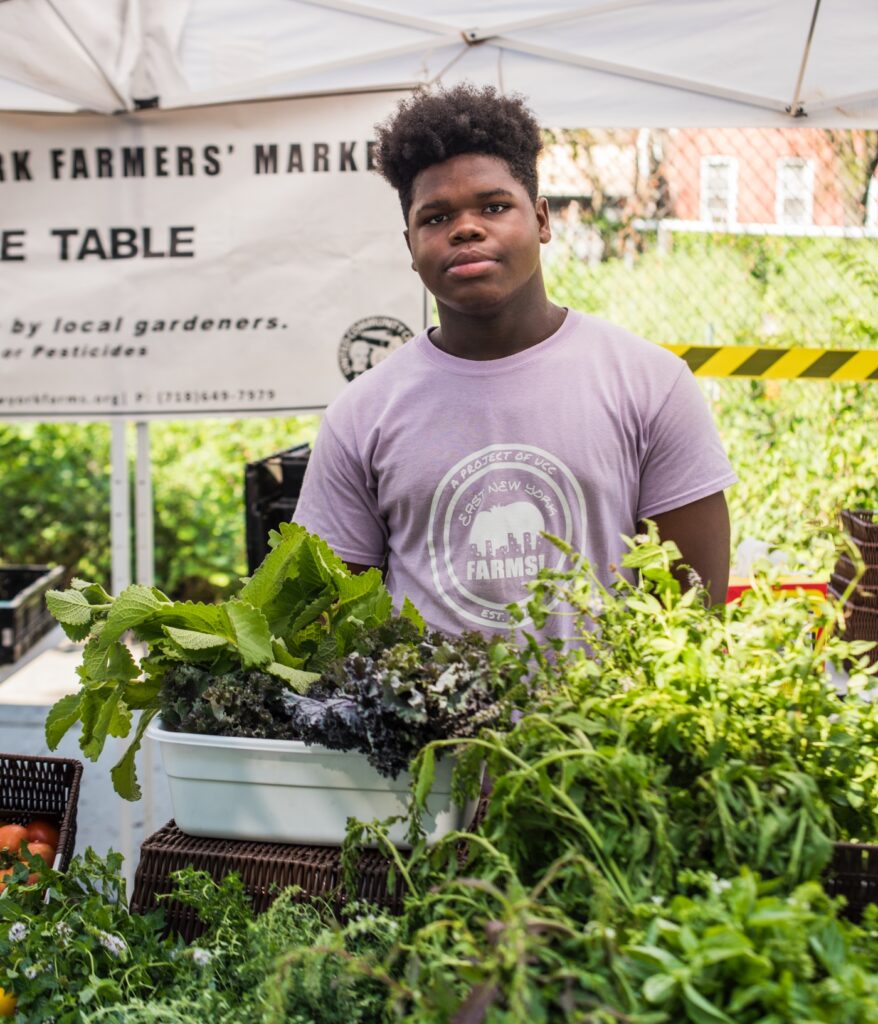
Over 70 different fruits and vegetables are grown at this urban biodiversity oasis, including many specialty crops that speak to the diverse cultural backgrounds in the community. “We grow things like karela, also known as bitter melon, callaloo and amaranth, long beans, okra, and jute, due to the culture of the neighborhood and also our staff,” says Harris. “East New York is predominantly a people-of-color community, and we make sure that every crop that we grow reflects the community—we are very intentional about how we think about and work with the community. We have started multiple community gardens in the area and help community gardeners with the process of starting their own.”
Activities the interns complete include workshops covering ideas around social justice, racial justice, and food equity. They learn farming skills and work at the farmers market, as well as providing hands-on support at fellow community gardens. According to Harris, “The main aim of the program is to teach youth how to grow their own food, expose them to urban agriculture, and also create some form of economic stability for them and their family, having them do something positive in the neighborhood.” Interns also lend a hand at ENYF!’s second farm, built in 2015 and located in the Pink Houses public housing development.
Managed by Kelly Guevara, all the produce grown there is distributed for free within the community. “We also distribute produce for free on a weekly basis in East New York to residents who cannot afford fresh, local, organically grown food,” says Harris. “Our produce is priced reasonably—tomatoes are $2 a pound—so we make sure we are meeting the community’s economic needs as well.”
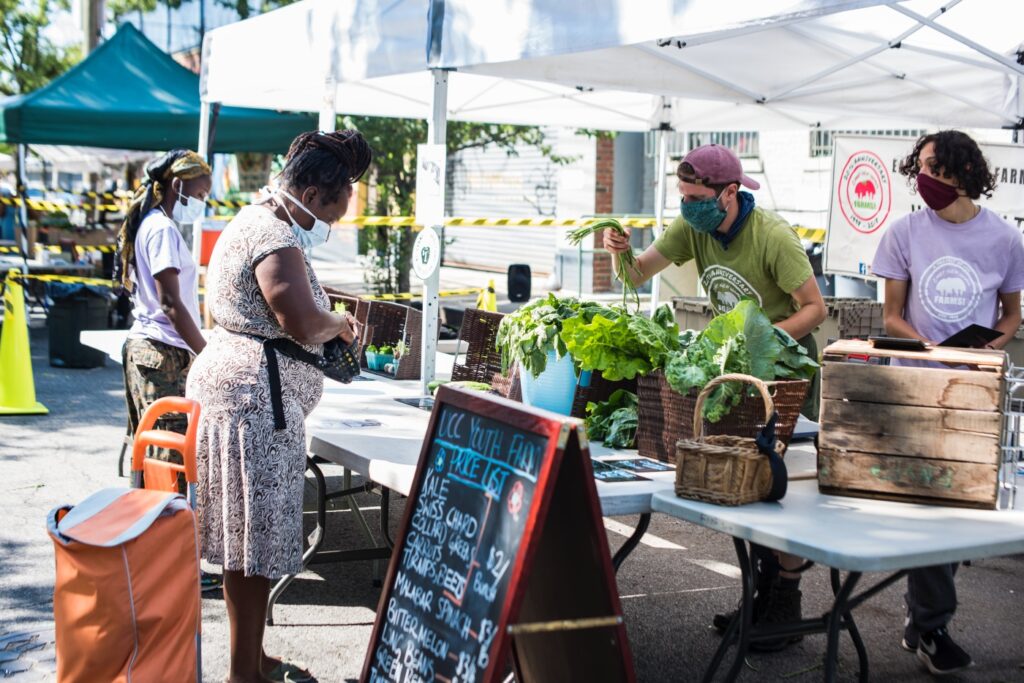
The neighborhood also benefits from ENYF!’s composting facility, which has a 24/7 drop-off site and processes food scraps collected from local residents, the farmers market, community centers, and a food pantry linked to a church they work with. “We use the compost we make on the farm, or if folks need compost, they can reach out to us, and we give it to them for free,” Harris says. COVID-19 has disrupted their routines, making farm accessibility a challenge. Some workshops have been moved online and their farmers market, usually held on Wednesdays and Saturdays, now operates just once a week. “All the produce sold at our farmers market is from our farms— youth harvest it themselves and sell at the market,” says Harris. “Some of our community gardeners sell their produce there too. Most of our community gardeners are elders, so selling their produce at the market when they don’t have a steady income, or a fixed income, is a subsidy for them to help with whatever bills they have to pay, or whatever they have going on.”
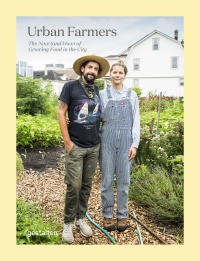
In the long term, one of the main challenges for ENYF! is finding a way to grow more food. “The challenge is how to implement a long-term, sustainable food-access program. We are seeing the pandemic affecting us and our neighborhood, and we want to make sure that our community is getting the best access there is,” Harris says. “I know we can’t do every single thing ourselves, but as long as we are there for our community, that’s what matters to me—as long as we can still provide that access.”
This excerpt from Urban Farmers: The Now (and How) of Growing Food in the City by Mónica R. Goya, edited by gestalten and Valery Rizzo (gestalten, 2021) appears with permission of the publisher.
|
Valery Rizzo
is an American portrait, food, and lifestyle photographer whose work centers around urban life and agriculture. She has been featured in The New York Times Style Magazine, YES! Magazine, Télérama, D La Repubblica, Der Spiegel, and several other esteemed publications.
|
|
Mónica R. Goya
is a Spanish journalist and photographer whose work focuses primarily on the fields of farming, food, environmental issues, and travel and appears in The New York Times, Condé Nast Traveler, and Saveur among others. Her long-term journalistic projects explore the culture of working the land and the intersection of human rights, food politics, and sustainability.
|
